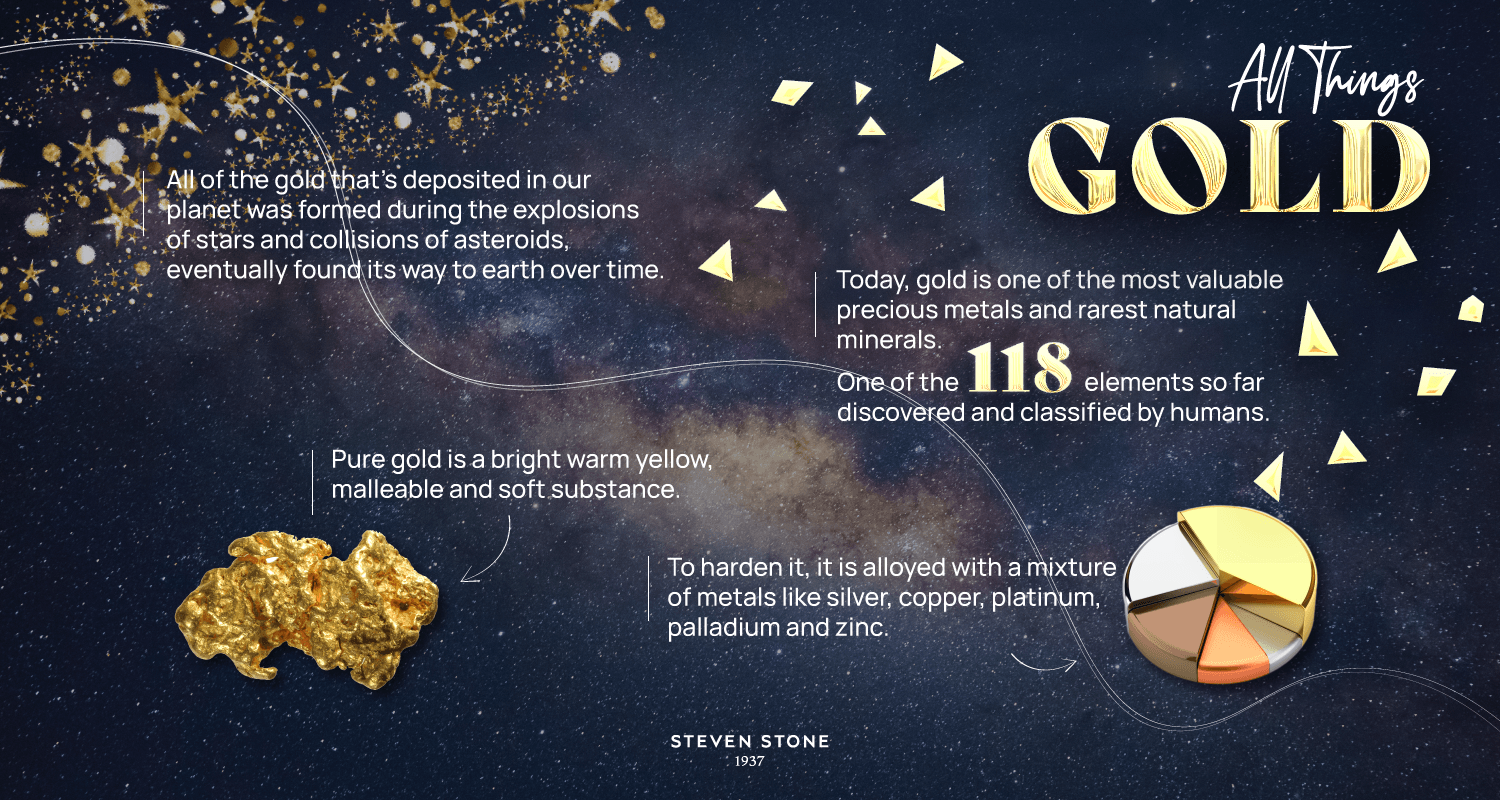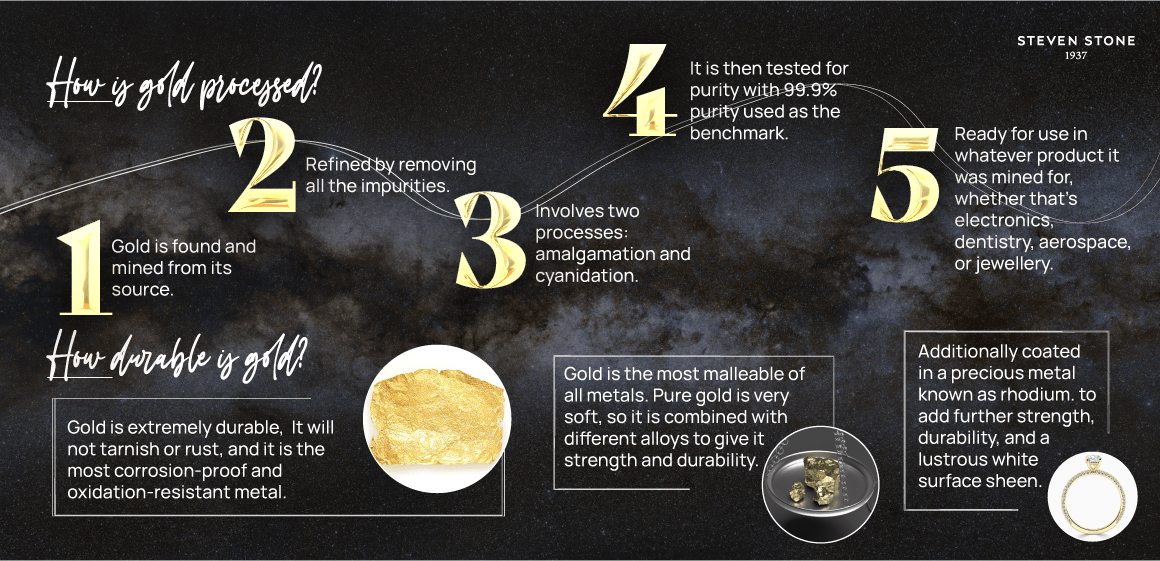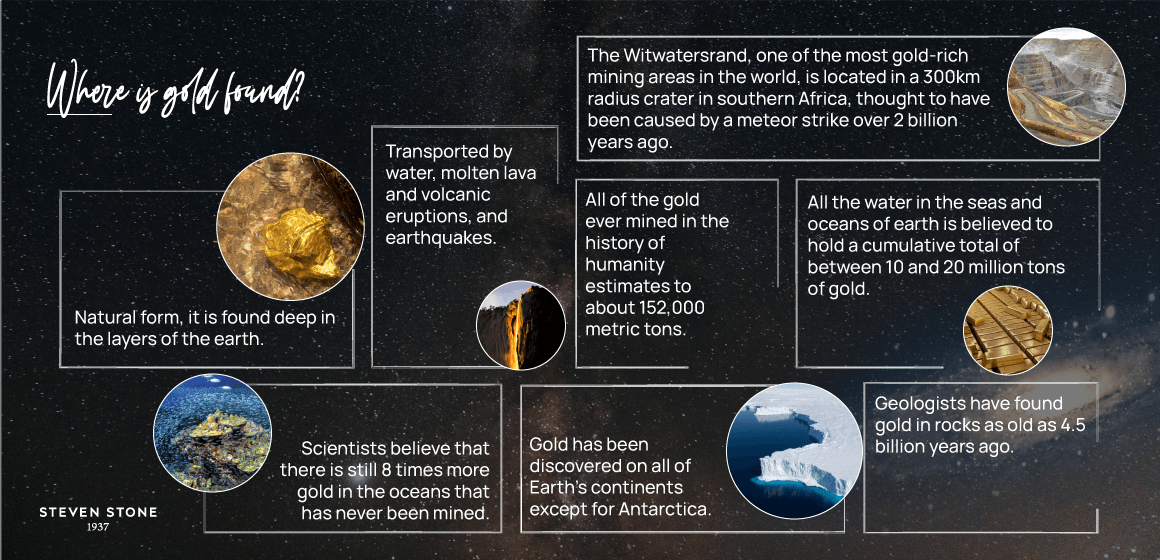How Is Gold Formed? Discover the Science Behind It
Gold is a highly coveted precious metal with a rich history of being used in a wide range of applications, from jewelry and currency to electronics and dentistry. But have you ever wondered how gold is actually formed in nature? In this comprehensive guide, we’ll delve into the intricate science behind the formation of gold, exploring the various geological processes that give rise to this valuable element.
The Origin of Gold in the Universe
Gold is believed to have originated from stellar explosions known as supernovae, where massive stars undergo a cataclysmic collapse and release enormous amounts of energy. During these supernova events, elements heavier than iron, including gold, are synthesized through nuclear fusion processes. This means that the gold we find on Earth today originated billions of years ago in the fiery depths of dying stars.
Celeste Ng Talks:
“Picture the vast expanse of the universe, with stars scattered like jewels in the night sky. Each of these stars holds within it the potential to create something as precious and rare as gold. It’s a humbling thought, isn’t it?”
Geological Processes of Gold Formation
Once gold is formed in the heart of a supernova, it must make its way to Earth through various geological processes. Gold is typically found in quartz veins or placer deposits, where it accumulates over time due to its high density and resistance to weathering. These geological processes involve a complex interplay of heat, pressure, and chemical reactions that transform existing rocks and minerals into gold-bearing deposits.
Celeste Ng Talks:
“Imagine the Earth as a vast canvas, painted with layers of rock and sediment that hold the secrets of its geological history. Within these layers lie hidden treasures waiting to be discovered, like veins of gold running through the earth’s crust.”

This image is property of crisscut.stevenstone.co.uk.
Formation of Gold Deposits
The most common geological process that leads to the formation of gold deposits is hydrothermal activity. This involves the circulation of hot fluids rich in minerals through cracks and fissures in the Earth’s crust. As these fluids cool and interact with surrounding rocks, they deposit their mineral content, including gold, in the form of quartz veins or other mineralized zones.
Celeste Ng Talks:
“Picture a subterranean world filled with boiling hot fluids coursing through the Earth’s crust, carrying with them the precious metals that will one day find their way to the surface. It’s a process as ancient as time itself, yet one that continues to shape the landscapes we see today.”
Types of Gold Deposits
There are several types of gold deposits that vary in their geological origins and characteristics. The most common types include:
- Vein Gold Deposits: Formed by hydrothermal fluids filling fractures in rocks and leaving behind gold-bearing quartz veins.
- Placer Gold Deposits: Formed by the erosion and weathering of gold-bearing rocks, with gold particles accumulating in rivers, streams, and beach sands.
- Witwatersrand Gold Deposits: These are unique placer deposits found in South Africa, which are among the largest and most productive gold deposits in the world.
Celeste Ng Talks:
“Each type of gold deposit tells a different story of the Earth’s geological evolution, reflecting the diverse processes that have shaped the planet over millions of years. From the molten depths of the Earth’s mantle to the icy depths of ancient oceans, gold has traveled a long and tumultuous journey to reach our hands.”

This image is property of crisscut.stevenstone.co.uk.
Mining Techniques for Extracting Gold
Once gold deposits are identified and explored, mining companies use a variety of techniques to extract gold from the earth. The most common methods include:
- Open-Pit Mining: Used for shallow deposits where the ore is near the surface, involving the removal of overlying rock and soil to access the gold-bearing rocks.
- Underground Mining: Used for deeper deposits where the ore is located at significant depths, requiring tunnels and shafts to access the gold-bearing rock.
- Placer Mining: Used for alluvial deposits where gold particles are found in rivers and streams, involving the use of pans, sluice boxes, and dredges to extract gold from sediment.
Celeste Ng Talks:
“Think of mining as a delicate dance between human ingenuity and the raw power of the Earth. Miners brave the depths of the earth to unearth its hidden treasures, guided by generations of knowledge and expertise passed down through the ages.”
Environmental Impact of Gold Mining
While gold mining plays a crucial role in the global economy and the production of gold, it also has significant environmental impacts. Mining operations can lead to deforestation, soil erosion, water contamination, and habitat destruction, affecting biodiversity and ecosystem health. Sustainable mining practices, such as land reclamation, water treatment, and responsible waste management, are essential to mitigate these environmental impacts and ensure the long-term sustainability of gold mining.
Celeste Ng Talks:
“Balance is key when it comes to extracting resources from the earth. We must tread lightly on the planet, mindful of the delicate ecosystems that sustain life, and work towards a future where industry and nature can coexist harmoniously.”

This image is property of crisscut.stevenstone.co.uk.
Gold Recycling and Circular Economy
Given the finite nature of gold resources and the environmental concerns associated with mining, gold recycling plays a vital role in promoting a circular economy and reducing the need for new mining activities. Recycled gold is obtained from old jewelry, electronics, and industrial waste, which are melted down and refined to extract pure gold. This sustainable practice helps conserve natural resources, reduce energy consumption, and minimize the ecological footprint of gold production.
Celeste Ng Talks:
“Imagine a world where resources are reused and repurposed, where nothing goes to waste, and every element has value. Gold recycling is a shining example of how we can create a more sustainable future, one that respects the earth and its precious gifts.”
Conclusion
In conclusion, the formation of gold is a fascinating process that spans billions of years and involves a complex interplay of geological and astrophysical phenomena. From the fiery depths of exploding stars to the depths of the Earth’s crust, gold has traveled a long and tumultuous journey to become the precious metal we know and cherish today. By understanding the science behind gold formation and the environmental impact of gold mining, we can appreciate the true value of this rare and valuable element and work towards a more sustainable future for generations to come.
If you have any questions, please don’t hesitate to contact us at info@fastcashdc.com



